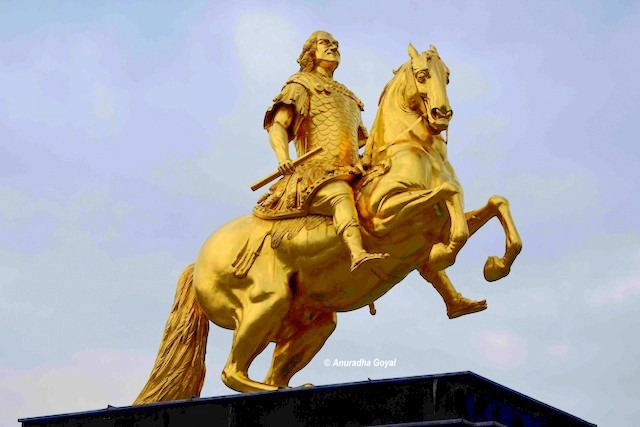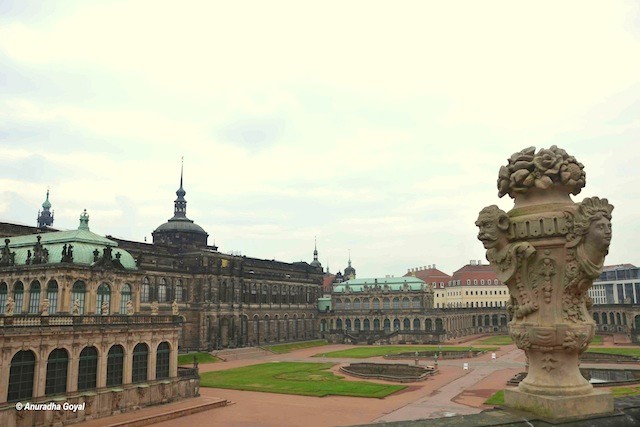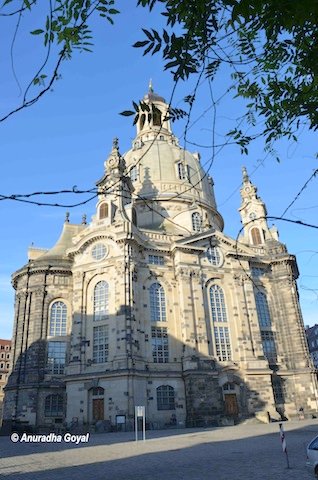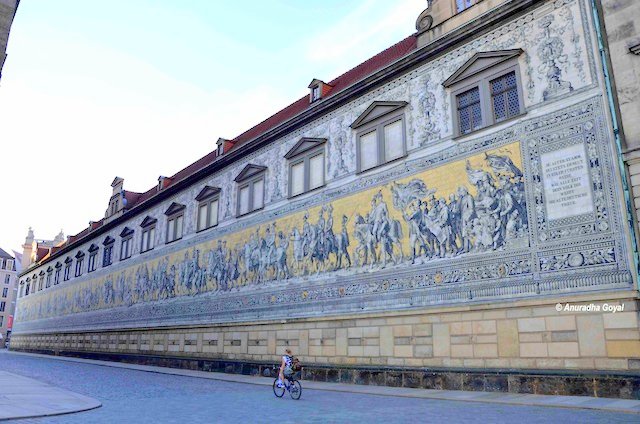
The city of Dresden likes to call itself the city of Augustus the Strong – it’s the most famous king who ruled in early 18th CE. His stories are scattered all around the city even today, on its walls as murals, in its squares as statues, in its gardens and monuments that he had built then. It was during his time that the city saw its peak, as he was the elector of Germany and king of Poland. A walk around Dresden old town by the river Elbe takes the visitors through old buildings and monuments, most of which have been rebuilt recently but unless explicitly explained you will never be able to make this fact out.
Things To Do In Dresden Old Town

Dresden’s most vivid memory comes from Feb 13th, 1945 when it was bombed and almost all the city was destroyed in the bombing. As you hear personal stories of that night from the citizens as they have heard it from their parents or grandparents, you almost feel as if the psyche of the city is divided between before this date and after this date. As part of East Germany, the ruins of buildings along the river were left just like that and rest of the city was cleaned to make way for the more socialist buildings that to me looked like boxes – straight and tasteless. After the 1970s a lot of the old structures have been revived to their old glory using the old paintings, drawings, and photographs.
Zwinger Palace

Our Dresden Old Town walk began from the riverside where a piece of the original wall still stands. We walk around the old buildings, look at the narrow streets filled with eateries. And through the tram tracks reach the opera house that has been completely re-built. It was re-opened with the same performance that was playing in 1945 when the bombing happened. From here we entered a building called Zwinger – as in to swing. It was built as a party place and a place to showcase the collections of Augustus the Strong who was obsessed with collecting oriental porcelain.
I found this building very fascinating, as it has no allegiance to any religion. It shows drunken men and nymphs with water as a key element. There are fountains in the middle of the huge garden. There is a bath much like ancient Roman baths with sculpted walls all around. Porcelain collection is still housed in a part of this structure along with a museum of mathematical and physical instruments. And a gallery of old masters – a collection of original paintings.
Church of Our Lady

Move a little ahead and a gorgeous church with a huge stone copula captures your eyes. This Church of Our Lady has a story parallel to that of Dresden. It was built by Augustus the Strong when he became the king of Poland and turned Catholic. One can safely assume that this would have been the center of attraction in the city. In the 1945 bombing, the church survived on 13th Feb and many people took shelter inside the church only to be burnt on 14th as the copula fell due to intense heat. The ruins of the church stood as it is until 1989. And after the German reunion, there was an open letter issued for support to rebuild this church as a gesture of friendship.
80 % of the money to rebuild the church came from individuals. Cross on top of the church was built entirely by the British money. And installed by the son of the pilot Allan Smith who had bombed the city, in an act of reconciliation. Re-building itself is an example of engineering precision as each stone was numbered and placed exactly where it would have been in the original church. While the new ones replaced the lost stones. As you stand there you can see old stones in burnt black color. As you see them in pictures of the ruins, you can see the part that was not damaged standing as such.
Wall Mural at Dresden Old Town

From here we came back towards the riverside to admire a 102 meters long wall mural in yellow. Known as the procession of the princes, on the outer wall of the royal stable. It shows the 826 years of the rule of house Wettins. Depicting the 35 kings along with a symbol depicting what each of them stood for. It was originally painted towards the end of 19th CE. To commemorate the 800 years of Wettins but was replaced by porcelain pieces to make it waterproof soon after. With 23000 Meissen porcelain pieces, this may be the largest porcelain artwork in the world. I thought this was a brilliant way to put history literally on the walls, in the open. For everyone to see and remember where we came from. On a lighter note, history lessons will become easier to remember.
I am always a bit overwhelmed after a walk in and around old parts of the cities. This one was a bit different, as it is the only old town that I have seen that was completely destroyed and has been reconstructed as it is. A bright example of respect for the history and the legacy that forefathers of the city intended to leave behind.
Recommend you to read the following travel blog posts on tourist attractions of Germany.
Malgorzata Chodakowska – Sculpting Wine
Panometer – Recreating The Dresden Of 1756
Spinnerei Leipzig – From Cotton To Culture
Leipzig Germany – A City That Celebrates Music
Bastei Rocks of Saxon Switzerland National Park
Admiring The Meissen Porcelain














wow!! very nice pics thanks for sharing
I like your post and everything you share with us is current and very informative,you have done a fantastic job
Very Informative…
Thanks 🙂